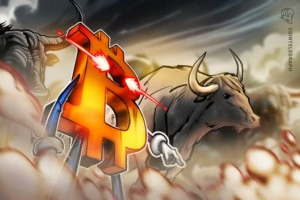Recent onchain data presents a paradox in the Bitcoin (BTC) market: while retail investor activity seems subdued, analysts argue that these investors are actually transitioning towards spot Bitcoin ETFs. This shift raises important questions about the future of Bitcoin investment strategies and market dynamics.
Key Insights:
- Onchain metrics indicate a downturn in small wallet activity, suggesting retail investors are not purchasing Bitcoin directly.
- The growth in assets under management (AUM) for spot Bitcoin ETFs signals a robust interest that may redefine retail participation.
- In 2025 alone, retail investors reportedly hold around 75% of U.S. spot Bitcoin ETF shares, implying that retail demand is merely channeled through different avenues.
Since the launch of spot Bitcoin ETFs in the U.S. at the beginning of 2024, the exposure to Bitcoin has broadened significantly. Retail clients who may have hesitated to buy Bitcoin directly now find it more accessible via ETFs. This newfound interest might stem from a lack of self-custody confidence and regulatory clarity that these investment vehicles offer.
Investment advisers and hedge funds leading the ETF charge manage Bitcoin for retail and institutional clients. The implication here is profound: retail investors may still be central to the Bitcoin landscape, but their methods of engagement are evolving dramatically. As assets in spot Bitcoin ETFs reach approximately $135 billion, the financial landscape is shifting towards a more TradFi-focused model, where institutional frameworks dominate.
Despite this apparent demand, Bitcoin’s price continues to face pressures, reflecting the complex nature of cryptocurrency investments. Current market conditions suggest that while new capital flows through ETFs, they have yet to stabilize Bitcoin’s price trajectory. Analyses show that while apparent demand peaked at around $1.6 million, it dwindled to negative territory, indicating that ongoing outflows continue to challenge the demand side of the equation.
In conclusion, while direct retail demand does appear muted, it is not extinguished. The transformation of how retail interacts with Bitcoin signals a growing preference for derivatives like ETFs compared to direct purchases. Retail participation may merely be evolving, and under the right conditions, a resurgence of direct investment could be on the horizon.
This shift speaks to a profound trend in the cryptocurrency space: the blending of traditional finance and retail investors’ behaviors in cryptocurrency markets. As these dynamics continue to unfold, understanding this new retail sector will be vital for anticipating future market movements.



